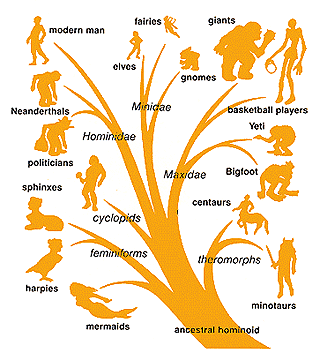
Posted on 11/04/2003 4:11:26 PM PST by blam
Source: Southern Connecticut State University
Released: Mon 03-Nov-2003, 14:00 ET
Earliest Stone Tools and Bones Site Discovered
An assistant professor of anthropology has discovered the earliest direct evidence of stone tool manufacture and use in a controlled setting, in an excavation in Gona, Ethiopia. His research team dates the tools they found to 2.6 million years old.
Newswise — Michael Rogers, an assistant professor of anthropology at Southern Connecticut State University, has discovered the earliest direct evidence of stone tool manufacture and use in a controlled setting, in an excavation in Gona, Ethiopia. Rogers and his research team date the tools they found to 2.6 million years old. An article reporting their findings was published in the September 2003 issue of the Journal of Human Evolution.
Three years ago, Rogers was in Ethiopia working on a paleoanthropological research project in Gona, in an area that hadn’t been looked at before. He found a few flakes—tools that are pieces of stone chipped off of a larger stone—and began digging with a crew of experienced excavators. What they eventually discovered is a significant development in the field of paleoanthropology: the earliest stone tools and animal bones at the same site, clearly associated with each other, indicating early humans’ use of tools to provide food for themselves.
“This is the earliest site that really documents the two together,” says Rogers, adding, “There’s no question that they are associated with each other. Our ancestors were using the artifacts to process animal parts, which probably shows that humans were expanding their diets to include animals and were no longer largely vegetarians—they were becoming at least partly carnivorous.”
At the time of the discovery, Rogers was part of an international research team, the Gona Paleoanthropological Research Project, led by Sileshi Semaw, Ph.D., an Ethiopian anthropologist working at CRAFT Research Center, Indiana University. Gona is in Ethiopia’s Awash Valley, nearly at sea level. This area was already known to have the earliest stone tools, and is adjacent to Hadar, where “Lucy,” probably the most famous hominid fossil yet to be discovered, was found in 1974.
Researchers on the Gona Project have found cutmarked bones before, says Rogers, but not in a controlled setting. The setting where he and his group made their discovery is an excavation area that is four meters wide by one meter deep. Several hundred artifacts were found in this area. “If this was the earliest site in the world, we expected things to be crude, but the tools appear to have been well made,” says Rogers. The tools they found “are incredibly fresh for their age,” he adds. “The condition of the site, for its age, is shocking.”
Rogers says the site is on the bank of a river and at one time was probably covered over when the river flooded and hasn’t been touched since. “This site is in pristine condition,” he says. “We know it hasn’t been moved.” The materials the researchers found are being kept at the National Museum of Ethiopia in Addis Ababa.
Rogers and his colleagues found at the site diverse types of stone, indicating that the toolmakers were discriminating about the materials they chose to use. “Our ancestors had to know what kind of rock flakes the best,” says Rogers. “They chose only the rarest kinds of cobbles from the ancient stream bed nearby for their ‘flake-ability.’ They were being very selective.”
Rogers says that the group’s find shows the start of something that hasn’t yet stopped: human beings’ use of technology. “You can trace our technology use way back,” he says. “These stone tools show that our human ancestors were capable of creating something completely new and that they had an insight about what they were creating.”
In his anthropology classes, Rogers shows his students how flaking works, and then has them give it a try. To do it, one holds the core stone in one hand and a smaller stone in the other, and then hits the smaller stone against the core, with the goal of flaking pieces off. It’s not easy to do well, Rogers points out, so the earliest toolmakers must have had some kind of skill. “You have to make a glancing blow, at the right angle and with the right force. It requires good eye-hand coordination. And you have to choose the right kind of stone. All of this was abundantly evident at the site.”
In the field of the earliest archaeology, Rogers says, “everything is in Africa—there is nothing older anywhere else. People say it all the time: Africa is the cradle of humankind.”
Let me know if you wish to be added or removed from this ping list.
For real time political chat - Radio Free Republic chat room
2.6 MYA would certainly be older than homo sapiens and neanderthals. So these would have been made by h. erectus? or ergaster?
Patrick, hope its OK to borrow your ping list.

Answering my own question: according to this time line, the likeliest species to have been making tools 2.6 million years ago would be homo habilis.
Please quit messing up the threads I post, I don't disrupt yours.
Evolution uses existence as proof with no explanation of existence ...
it happens (( Atheo - anarcho - loon psuedo science)) ---
can't deal with substance --- only style ? ?
Do you think I'm going to rollover and let the FR rats knaw me to death ?
Disclaimer: Opinions posted on Free Republic are those of the individual posters and do not necessarily represent the opinion of Free Republic or its management. All materials posted herein are protected by copyright law and the exemption for fair use of copyrighted works.